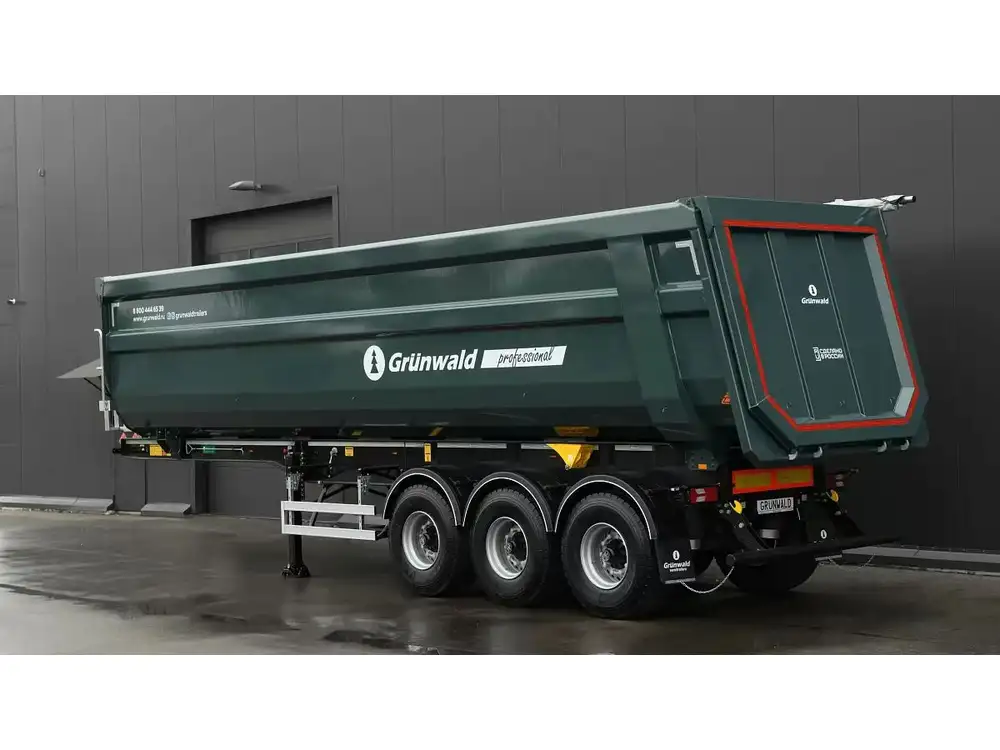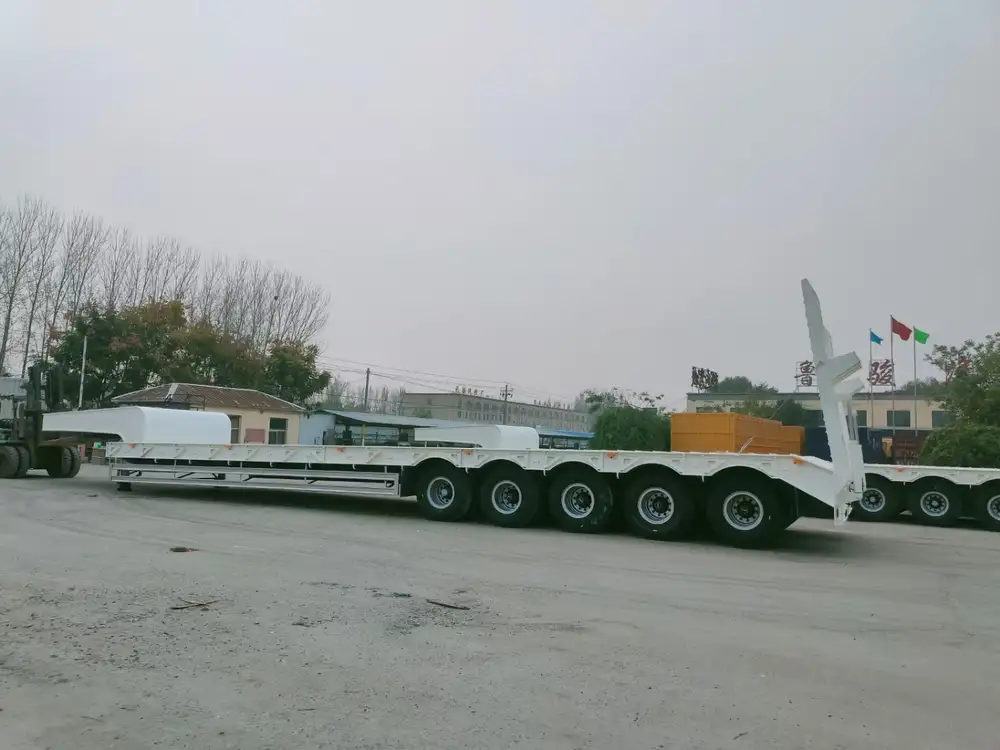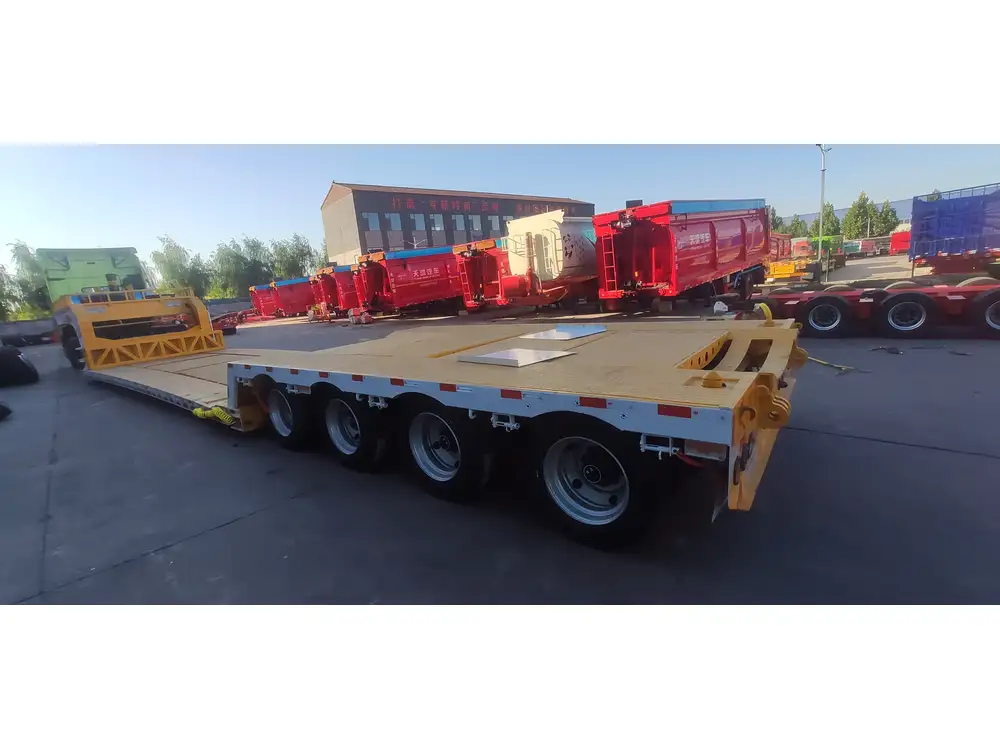In the realm of transportation and logistics, semi-trailers serve as the backbone for freight movement across vast distances. Among the components of a semi-trailer, the bumper is often overlooked yet plays a significant role in safety and functionality. In this article, we delve deep into the intricacies of the bumper on a semi-trailer, exploring its purpose, types, and vital specifications while addressing common inquiries and concerns.
What is the Bumper on a Semi-Trailer?
The term “bumper” in the context of semi-trailers often refers to a structural component situated at the rear of the trailer. More technically known as a rear bumper assembly, it contributes significantly to trailer safety by absorbing impact energy during collisions, protecting both the trailer and any vehicles that might rear-end it.
Key Functions of the Semi-Trailer Bumper
Impact Absorption:
The primary function of a bumper is to absorb shock during minor collisions, thereby safeguarding the trailer’s integrity and the cargo it carries.Safety Enhancement:
A properly designed bumper can reduce the risk of injury to drivers and pedestrians while providing a visual indicator of the trailer’s presence.Regulatory Compliance:
Many jurisdictions have specific regulations governing bumper design and performance, reinforcing the importance of compliance to prevent fines or accidents.Reinforcement of Structural Integrity:
Bumpers not only absorb impacts but also help maintain the structural rigidity of the trailer’s rear section, preventing deformation during collisions.

Types of Bumpers on Semi-Trailers
Bumpers come in various designs and materials, each suited to specific applications and regulatory requirements. Below are the most common types of bumpers used on semi-trailers.
1. Steel Bumpers
Overview:
Steel bumpers are the most traditional form of bumpers used on semi-trailers, characterized by their robust construction.
Pros:
- Exceptional durability.
- High impact resistance.
- Capability to withstand extreme conditions.
Cons:
- Heavier than alternatives.
- Susceptible to rust and corrosion if not properly coated.
2. Aluminum Bumpers
Overview:
Aluminum bumpers offer a lightweight alternative to their steel counterparts.
Pros:
- Reduced weight enhances fuel efficiency.
- Resistant to corrosion.
- Excellent strength-to-weight ratio.
Cons:
- Generally more expensive than steel.
- May not provide the same level of impact resistance.

3. Composite Bumpers
Overview:
These bumpers are made from a combination of materials, often including reinforced plastics.
Pros:
- Lightweight and cost-effective.
- Good impact absorption properties.
- Resistant to various chemicals and environmental factors.
Cons:
- Potentially less durable than steel or aluminum in high-impact situations.
4. Reinforced Bumpers
Overview:
Made primarily for heavy-duty applications, these bumpers undergo additional steel reinforcement.
Pros:
- High resistance to impacts.
- Suited for trailers carrying heavy loads.
Cons:
- Increased weight can affect fuel efficiency.
- Higher cost due to additional materials.
Bumper Specifications and Standards
Bumper compliance is vital for safety and legality in the transport industry. Regulations typically set minimum height, width, and strength standards, as outlined by various safety boards and transportation authorities.

Bumper Height
Regulations:
Most jurisdictions mandate that the bumper height from the ground range between 16 to 30 inches, depending on the type of vehicle and trailer specifications.Importance:
Correct bumper height plays a crucial role in minimizing damage in the event of a collision, ensuring it interacts appropriately with the vehicle striking it.
Bumper Width
Standard Width:
The width of a bumper must usually align with the trailer’s structure, typically spanning the full width of the trailer—approximately 102 inches for standard semi-trailers.Functionality:
A wider bumper can better distribute force during impacts, further enhancing safety.
Impact Resistance
Testing Standards:
Bumpers need to undergo rigorous testing to ensure adequate performance under specified conditions. Standards from organizations such as the National Highway Traffic Safety Administration (NHTSA) are frequently referenced.Material Considerations:
Different materials offer varying levels of impact resistance which needs to be factored into the design and selection process.

Installing and Maintaining Bumpers on Semi-Trailers
Installation Guidelines
Prepare the Site:
Ensure the trailer is parked on a level surface, and safety equipment such as chocks and stands are in place.Remove Old Bumper:
Carefully detach the old bumper, ensuring no damage occurs to the trailer’s rear.Fit the New Bumper:
Align the new bumper with pre-drilled holes, ensuring it meets all regulatory requirements.Secure the Bumper:
Use high-strength bolts to firmly attach the bumper, checking for proper torque settings as recommended by the manufacturer.Inspect for Compliance:
Once installed, ensure the bumper meets all functional and regulatory specifications.
Maintenance Tips
Regular maintenance of the semi-trailer bumper is essential for optimal performance and longevity. Follow these tips to ensure your bumper remains in prime condition.
Routine Inspections:
Conduct visual inspections for cracks, rust, or misalignment at regular intervals, especially after long hauls or impact events.Corrosion Protection:
For metal bumpers, applying anti-corrosion coatings can significantly extend lifespan.Cleaning:
Regularly clean the bumper to remove dirt, debris, and chemicals that can accelerate wear and tear.Professional Assessment:
Engage a qualified technician to evaluate the bumper’s condition periodically, especially if the vehicle has been involved in any accidents.

Addressing Common Questions About Semi-Trailer Bumpers
What Type of Bumper is Best for My Semi-Trailer?
Choosing the best bumper depends on various factors including the type of cargo, usage, and regulatory compliance. Steel bumpers are ideal for heavy-duty applications, while aluminum bumpers offer weight savings for general freight transport.
How Often Should I Replace My Semi-Trailer Bumper?
Regular inspections play a key role in understanding when to replace the bumper. If heavy impact occurs, even if it appears intact, it is prudent to have it professionally assessed. Generally, a bumper should last several years, but material degradation from road conditions and use can necessitate earlier replacement.

Are There Regulations Governing Semi-Trailer Bumpers?
Yes, each region, including the United States, has specific regulations enforced by bodies like the NHTSA that govern bumper height, width, and performance standards. Stay informed regarding local regulations to maintain compliance.
Can I Retrofit a Different Type of Bumper On My Semi-Trailer?
Yes, retrofitting is possible; however, it is imperative to ensure that the replacement bumper meets all regulatory standards and properly fits the existing mounting points. Consult with a professional to guarantee safety and functionality.
Conclusion: The Vital Role of Semi-Trailer Bumpers
Understanding the function, types, and importance of bumpers on semi-trailers is crucial for any entity engaged in freight transport. As integral components of trailer safety, they warrant careful consideration in selection, maintenance, and compliance with industry regulations.
By preserving the capability of these bumpers, both operational efficiency and safety on the road are enhanced, cementing their role not just as a regulatory requirement but as a pillar of secure transportation. As the logistics industry advances, staying informed and proactive regarding trailer specifications ensures safety and durability remain at the forefront of every journey. By recognizing the bumper’s significance, we can better appreciate its contribution to the overall mission of transportation excellence.
For anyone seeking semi-trailers, having a grasp of bumper options will undoubtedly facilitate informed decisions leading to enhanced safety and performance in logistics operations. In every journey, the semi-trailer bumper is not just a component but a veritable shield, safeguarding lives, cargo, and the broader ecosystem of transportation.



